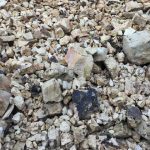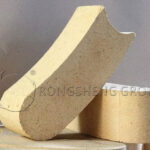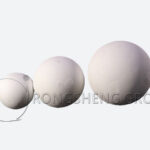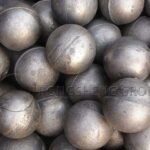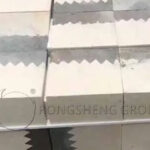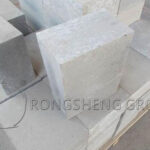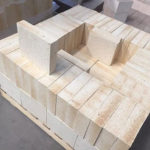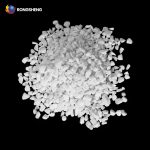High-alumina refractories are used in various high-temperature industries. The environmental acceptance report for a waste incineration plant included a unique set of data: after more than a year of operation, the furnace lining, made of alumina-magnesium spinel bricks (including green-vein high-alumina materials), maintained fluoride and heavy metal leaching concentrations below national standards, achieving EU environmental certification. This detail reveals a trend: high-alumina materials are becoming a “long-life refractory lining material” for high-temperature industries, found in everything from steel and cement to environmentally friendly energy.
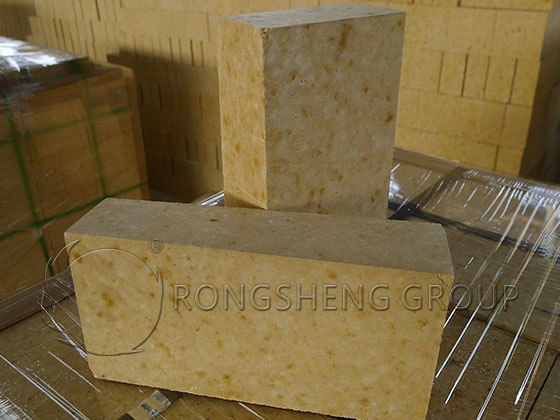
The steel industry is a major and extensive user of high-alumina materials. High-alumina bricks (75% Al₂O₃) are used in the middle and lower parts of blast furnaces to resist molten iron corrosion, while alumina-carbon bricks are used in the hearth to prevent penetration. Alumina-magnesium spinel ramming material is used at the converter taphole to withstand 1600°C slag erosion. After using high-alumina materials, a steel group reduced refractory consumption per ton of steel from 3.5kg to 2.8kg, saving 12 million yuan annually.
The cement industry also relies on them to withstand the high-temperature test. High-alumina bricks (80% Al₂O₃) are used in the firing zone of rotary kilns to withstand clinker erosion. High-alumina castables are used in the preheater lining to resist 1000°C cyclic high temperatures and alkali corrosion. A comparative experiment at a cement plant showed that rotary kilns using high-alumina castables reduced annual maintenance from four to two, improving overall efficiency by 30%.
Glass and ceramic kilns place even greater emphasis on “precision performance.” High-alumina checker bricks are used in the regenerators of glass melting furnaces to withstand temperatures up to 1600°C and flue gas corrosion. High-alumina lightweight castables are used in ceramic roller kilns for excellent thermal insulation and resistance to rapid cooling and heating. Using these materials at a ceramic plant reduced the kiln temperature difference from ±5°C to ±2°C, and reduced product color variation by 15%.
Even in the environmental protection and energy sectors, the use of high-alumina castables is essential. Magnesia-alumina spinel bricks are used in the furnaces of waste incinerators to withstand abrasion from acidic flue gases and fly ash. Aluminum coatings are sprayed on the heating surfaces of biomass boilers to prevent slagging and corrosion. After using this coating at one biomass power plant, the boiler cleaning cycle was extended from 15 days to 30 days, increasing power generation efficiency by 5%.
These applications rely on the core performance characteristics of Green Vein’s high-aluminum materials: Cl ≤ 0.5% (to prevent high-temperature volatilization and equipment corrosion) and thorough removal of harmful substances (to meet hazardous waste exemption standards). As refractory manufacturers have noted, while previously sales relied on low prices, today’s customers prioritize high-quality raw material sources and environmental performance. Consequently, Green Vein’s high-aluminum materials are widely used in high-temperature applications.
Effect of Cement Type on the Properties of High-Alumina Wear-Resistant Plastic
In recent years, circulating fluidized bed boilers (CFBs), a major “clean combustion” device, have been widely used in new and renovated thermal power plants, driving the continuous improvement and development of refractory materials used in CFB boilers.
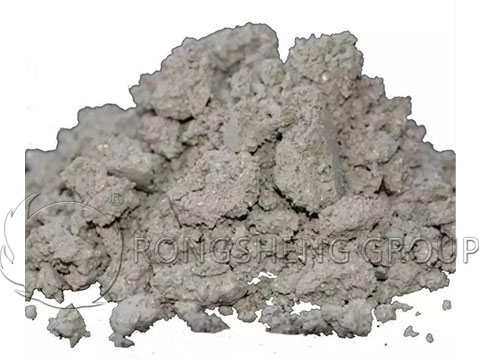
CFB boiler linings have complex structures, and the combustion chamber contains large quantities of highly concentrated, rapidly circulating coal particles and flue gas. This requires CFB boiler lining refractory materials to possess not only excellent workability but also high strength and excellent wear resistance. High-alumina wear-resistant plastic is primarily used in CFB boiler linings with complex structures that cannot be cast in a vertical mold. However, it can be used in areas where prefabricated or hand-rammed or applied materials are required, such as water walls, primary return areas, and cyclone separators.
High-alumina wear-resistant plastic is generally a refractory material composed of aggregate, powder, binder, and coagulant, mixed in a specific proportion to achieve a certain viscosity and plasticity. In high-alumina wear-resistant plastics, the selection of coagulants and the study of the coagulant mechanism have an important impact on the construction performance of plastics and the service life of CFB circulating fluidized bed boilers. Therefore, high-alumina bauxite, silica powder and alumina powder were used as raw materials, and aluminum dihydrogen phosphate and phosphoric acid were used as binders to prepare high-alumina wear-resistant plastics for CFB boilers. The focus was on studying the effects of four calcium aluminate cement coagulants of 60, 65, 70 and 75 on the coagulant mechanism of high-alumina wear-resistant plastics and on the sintering properties and wear resistance of the plastics after firing. The results show that,
- Calcium ions in calcium aluminate cement play a major role in accelerating the setting of high-aluminum wear-resistant plastics. As the calcium oxide content in calcium aluminate cement gradually increases, the initial setting time of the sample gradually increases.
- Aluminate cement accelerator directly affects the room-temperature mechanical properties of plastics after 110°C drying and 1100°C heat treatment. As the calcium oxide content in aluminate cement decreases, the bulk density and room-temperature strength of plastics after drying and heat treatment gradually decrease.
- After heat treatment, the phase composition of high-aluminum wear-resistant plastics is composed of corundum phase and mullite phase. Increasing the alumina content in the accelerator aluminate cement will enhance the crystallization characteristics of the corundum phase in the plastic.
What are the disadvantages of using too much high-alumina cement in refractory castables?
Refractory castables are a non-adhesive mixture of aggregate, fine powder, binder, and admixtures. They are typically delivered dry to the user manufacturer and then mixed with water or other liquids during application.
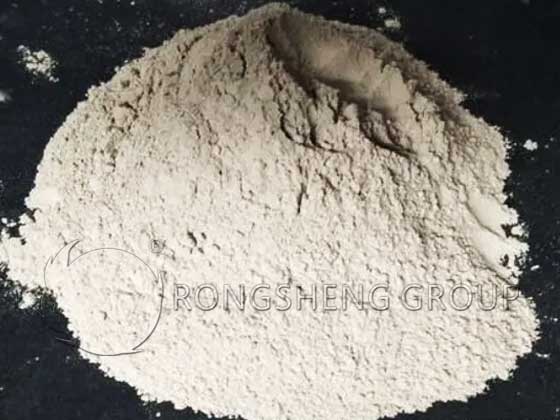
Refractory castables come in a wide variety of materials and types. They are categorized by bonding system, including cohesive bonding and hydration bonding. High-alumina cement-bonded castables are water-based materials that require application, curing, and baking. Their properties and composition change during heating. However, increasing the amount of high-alumina cement in the binder for high-alumina cement-bonded castables can have an impact on the castable.
The disadvantages of using too much high-alumina cement in refractory castables include:
- The high amount of high-alumina cement required also requires a large amount of water, resulting in high energy consumption after drying or heat treatment of the product.
- The high amount of high-alumina cement used also results in a high amount of hydrated matter in the refractory castable. After treatment at medium temperatures (538-982°C), the hydrated products need to be dehydrated, which can lead to a decrease in castable strength.
Third, large amounts of high-alumina cement are added, and the cement also introduces a large amount of calcium oxide, which affects the high-temperature performance of the castable.
High-alumina cement-bonded refractory castables can be categorized by cement content into ordinary cement castables, low-cement castables, and ultra-low cement castables. Low-cement castables are deflocculated castables with a calcium oxide content of 1.0%-2.5% introduced by the high-alumina cement. Ultra-low cement castables, on the other hand, are deflocculated castables with a calcium oxide content of 0.2%-1.0% introduced by the cement. In addition to being categorized by the high-alumina cement content, they can also be categorized by construction method, such as “self-flowing castables” and “pumping castables.”
Deflocculated castables are hydration-bonded refractory castables that incorporate at least one deflocculating agent and contain at least 2% ultrafine powder. In fact, all widely used refractory castables meet this requirement.
The high alumina cement content in ordinary high-alumina cement castables does have some advantages, such as improved strength and uniformity of the castable’s internal structure after curing. For example, in corundum castables, CaO can form CA. , which has little impact on high-temperature performance.
Thus, after numerous technological improvements, refractory castables are increasingly focused on user experience and are produced through customized processes.

